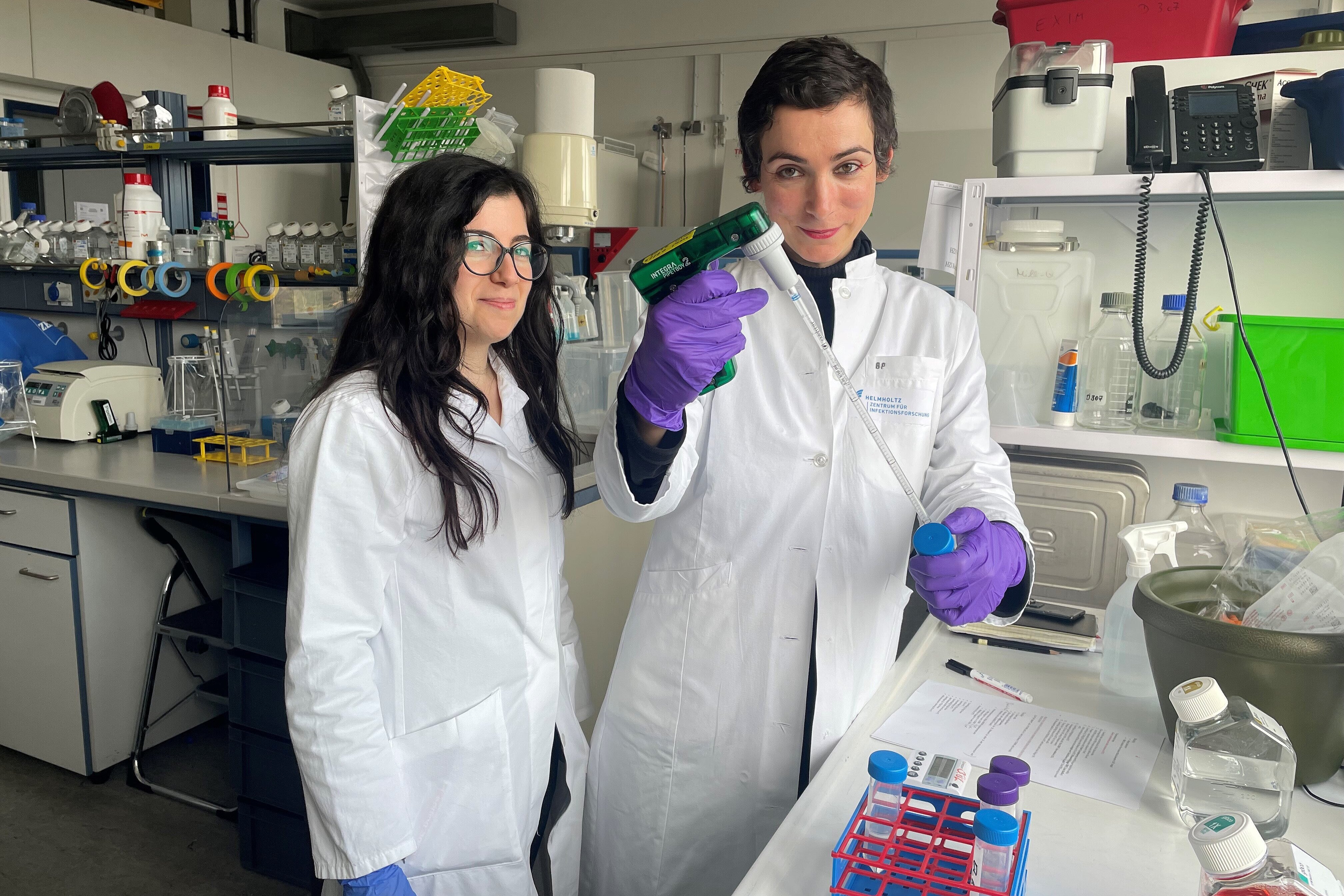This art project is part of the EU-funded ENLIGHT-TEN+ network (European Network Linking Informatics and Genomics of Helper T cells in Tissues), which is coordinated by Prof Jochen Hühn and educates 15 young scientists at the interface of immunology and big data analysis at academic and non-academic institutions in ten European countries. The finished artwork will be presented in September during the European Congress of Immunology in Dublin.
Margherita Pevere describes her artistic work also as research. “I see art as a way of knowledge production which brings artworks and thoughts into the world that interpenetrate into each other. My aim is not only to provoke, unsettle or inspire awe, but to stir broader discussions about the way we are and who we are in the world.”
Pevere often uses her own body in her art, for example in performances or as a source of samples: “I see my work as a garden crawling with genetically edited bacteria, cells extracted from my body, sex hormones, microbial biofilm, blood, slugs, growing plants and decomposing biological remains. In such a garden, I am only a guest.”
For the art project at the HZI, Pevere isolated her immune cells from a blood sample and stained them with specific fluorescent dyes. The different cell types were then phenotypically characterized according to the high-dimensional color patterns using flow cytometry, an analysis method widely used in immunological research. With the help of this analysis, Pevere, who lives with an autoimmune disease affecting her skin, wants to find out whether her immune cells give a different picture in flow cytometry than in healthy people. The result will then be incorporated into a work of art that is to be created in the coming months.
In a broader context, Pevere is focusing on the topic of death. “Death is still a taboo subject in our Western society; we often only talk about it when it's almost too late,” she says. With her art, she wants to encourage people to come to terms with death, talk about it and give it dignity. In order to achieve this, she looks at it from different perspectives. Her art project at the HZI deals with death on a cellular level, as her autoimmune disease causes immune cells to excessively kill skin cells in the body.
With a transdisciplinary background, Margherita Pevere has recently gained her doctorate in Artistic Research at the Aalto University, School of Arts, Design and Architecture, Finland, with a focus on art, biotechnology and philosophy.


